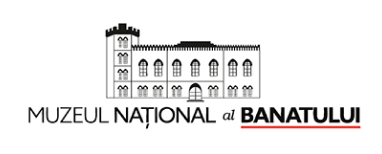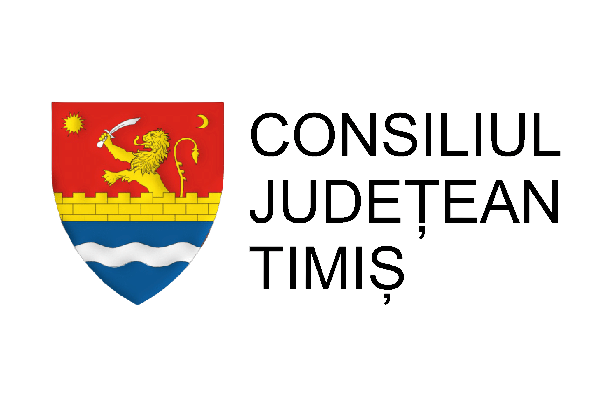The lepidopteran collection “Dr. Frederic König ”
The lepidopteran collection “Dr. Frederic König ”is the richest regional collection of day butterflies in this part of Romania. It contains 23,000 specimens belonging to 1750 species. It contains over 200 species and subspecies with significant faunal value, rarities, unique, endemics, princeps specimens, allotypes, holotypes and variations, declining species, scientific curiosities.
The foundations of the collection were laid in 1954 when 2031 copies were purchased from the Timişoara teacher Ernest Kraushaar. Until then, there were a small number of native and exotic butterflies in the collection of Professor Káldor Nándor and New Guinea explorer Fenichel Sámuel. In 1961 and 1964, the acquisitions of the lepidopterologist Dr. Aurelian Popescu-Gorj and the doctor Dr. Nicolae Săvulescu were added. In 1967, the museum purchased 460 copies of exotic butterflies from Dr. Andrei Bostan.
Currently, 90% of the lepidopteran collection is the result of the scientific activity of the Banat researcher Dr. Frederic König. Lepidoptera Collection „Dr. Frederic König ”entered the museum's patrimony in 1970 when 13,060 copies were purchased. It was enriched by collections and acquisitions from 1970-1994.
The collection includes pieces of scientific and documentary value, namely the holotype and allotype of the species Erebia melas runcensis König, a subspecies collected in the Apuseni Mountains and described by Dr. Frederic König, the metatype of the species Erebia melas carpathicola Popescu-Gorj et Alexinschi- Haghimaş, as well as the paratype of the species Erebia melas konigiella Popescu-Gorj, collected on Mount Piule from the Retezat massif. We point out the existence in the collection of some species of faunal interest endangered by the disappearance of their biotope: Chamaesphecia palustris, Ostrinia palustralis, Cortina borelli ssp. Lunata, Rhyparioides matelkana.
The collection includes other species of documentary-faunal value, among which we mention: the endemic Evergestis strogovichi, the boreoalpine relict Anaites simpliciata, the first European specimens of the species Xylena lunifera, the boreoalpine relic Apamea maillardi, the Pontomediterranean element Gortyna moesiaic , extinct species of Romanian fauna, Pieris nanni rossi, local species, found on limestones in southern Banat, endemic Erebia neleus etc. The collection of lepidoptera is also composed of a series of hybrids, made for the first time in our country, by Dr. Frederic König, hybrids between the species Eudia pavonia and Eudia spini and between Eudia pavonia and Batumia pyri.Following the acquisitions from 1980-1994, a series of rarities collected in Dobrogea and the Danube Delta were added to the collection, such as: Luperina zollikoferi, Drasteria caucasica, Votodonta vittata, Scotia puta, Scotia obesa nivea, etc.
The popularization of this collection has been done under different aspects, over time, through scientific works, maps, leaflets, illustrations (König Frederic, Catalog of the Lepidoptera Collection of the Banat Museum, published by CCES Timişoara, 1975, Supplement, 1998, with species, respectively 1440 specimens, from 1980 -1994; M-Kiss Andrei, Balaci Ana, Collection of lepidoptera "Dr. Frederik König", leaflet published by the Museum of Banat Timişoara, Department of Natural Sciences, Timişoara, 2006).
Conservation status: butterflies are preserved in insects, suitable drawers, hermetically sealed, dry preparations, by using chemicals (insecticides and insect repellents) being intended exclusively for scientific research. Therefore, muses, which would endanger the integrity of this natural heritage, are not used in exhibitions and other manifestations.
"Dionisie Linţia" ornithology collection
The ornithology collection "Dionisie Linţia" is the largest and most complex collection of native birds in Romania, which allows the development of complex studies, anatomical-morphological, biological, biostatistics, plumage and moulting or biogeography.
The collection was donated by Dionisie Linţia in 1937 and then contained 1300 pieces. It currently contains 2622 copies. The collection is structured as follows: 1769 balguri, of which 1580 come from Romania and 189 from abroad; 853 naturalized pieces, of which 825 come from Romania and 28 from abroad. 349 species and subspecies of birds, according to Charles Vourie's classification, classified into 20 orders, 51 families and 26 subfamilies. From a zoogeographical point of view, the Central European species are best represented, then the Eastern European species and finally those from the Southern European areas.
The birds are preserved in the form of skin and are intended for scientific research (manure). But the collection also contains three-dimensional naturalized (mounted) birds, which can be part of exhibitions and can contribute to ecological education being presented in biogroups and dioramas.
The popularization of this collection was done through numerous scientific works: Dionysius Line, Systematic Catalog of the Romanian Ornithological Fauna; Nadra Emil, Systematic Catalog of the Ornithological Collection of the Banat Museum Timisoara, Kiss Andrei, Dionisie Linţia, (Ornithological correspondence), Kiss Andrei, Dionisie Linţia, Ornithological observations, Kiss Andrei, Dionisie Linţia, Ornithological Collection, M-Kiss Andrei, Ornithology Collection "Dionisie Linţia", M-Kiss Andrei, Dionisie Linţia, 130 years since birth, but also through color illustrations, entrance tickets, photos, posters, articles and interviews in the media and ecological education.
OOLOGICAL COLLECTION The oological
collection (bird eggs) is based on part of the famous collection of the engineer Gustav Ertl, the director of forests. It includes 447 bird nests with 1957 eggs, representing 223 species of birds, which Dionisie Linţia brought to Timişoara, in 1910. In 1937, Dionisie Linţia donated another collection of 490 eggs, in 60 of nests from about 95 species of birds. After the Second World War, the situation of the collection is as follows: 198 represented species, eggs 537, number of eggs 2184, of which eggs with scientific data 357, and without data 179.
OSTEOLOGICAL COLLECTION
The osteological collection (bird and mammal bones) includes bird bones, obtained from the stuffing of birds (skulls and sternums), as well as mammalian skulls. It contains 132 specimens in good condition.
The museum collections that today form the cultural heritage of the History Section are closely related to the establishment of the Society of History and Archeology in Timişoara, in the 70s of the 19th century. For almost 135 years, the historical-archeological patrimony of the institution was a common one, the separation of the two collections occurring in 2006 following the administrative reorganization of the Banat Museum. Since that year, the History Section has been operating as an independent entity and holds in its patrimony over 100,000 cultural assets with a great historical and memorialistic value, both for the Banat area and for the history of Romania.
Today, the patrimony of the History Section includes valuable museum collections: documents and old books; sealing matrices; historical textiles; numismatic collection; weapons collection; science and technology collection; engravings and maps; photographs and clichés on glass; guild items etc.
In the organizational structure of the History Section is also the Museum Library, which in turn holds tens of thousands of books and specialized magazines, to which is added the old book collection and the press collection.
The Department operates specialists in medieval history, modern and contemporary history, as well as accredited experts in numismatics, medals and weapons. The staff of the Section has in its organizational chart a management position and eight other executive positions: a scientific researcher, five museographers, a museographer-librarian and a curator.
The Department of Natural Sciences is the direct descendant of the Society of Natural Sciences of Timișoara (1873-1918), which focused around it important personalities of Timișoara at that time, such as Dr. V. Szmolay, E. Merkl, Dr. L. Kuhn , Dr. L. Tökés, G. Czirbusz, Zs. Ormós and others, as well as world personalities of the time, such as E. Holub and others. More than 125 years ago, the Society of Natural Sciences set out to cultivate and spread all fields of natural sciences in general and to research the natural conditions of Banat in particular. For this purpose he held popularization conferences, organized excursions and expeditions for collection and study in Banat, set up the Museum of Natural Sciences, a specialized library, edited the Society's bulletin, Notebooks of Natural Sciences, and I got in touch with others. similar companies, by correspondence, exchange of publications and visits. Due to the effervescence of the cultural-scientific activity carried out by the Society of Natural Sciences from Timișoara, Banat was discovered from a naturalistic point of view. the telegraph, etc., have publicly used telephony since 1882 (national premiere), and since November 12, 1884 they have illuminated the streets of the city with electricity (European premiere), had a laboratory for the analysis of food and milk, a meteorological and seismological resort, and many others, which made Timișoara a modern European city at the end of the last century.
In the interwar period (1919-1945) the old collections, which diminished due to inadequate spaces and specific pests, were gradually replaced by the new collections. The first exhibitions are being built, and the new ways of exhibiting, in biogroups and dioramas, open a modern period of Romanian museology, whose spiritual mentors and main organizers were G. Antipa in Bucharest and D. Linția in Timișoara. Dionisie Linția (1880-1952), hunter, dermoplastician and learned ornithologist, led and built the Museum of Natural Sciences until the end of his life, laid the foundations of the largest collection of native birds in Romania, compiled the first catalog of this collection , established the Jurilovca-Timișoara Ornithological Resort (the first ornithological resort in the country), participated in the organization of the First Congress of Naturalists in Romania. His name is also linked to the establishment of the Sinaia Zoo, the Hubertus Hunting Society, the Timișoara Sleeping Fishing Society, etc. His work, The Birds of Romania, in 3 volumes, is the leading book of ornithologists and includes all the data known in this specialty up to him.
In 1954, the Museum of Natural Sciences moved to Huniade Castle, second floor, as an integral part of the Banat Museum, later the Banat Museum of Timisoara, where it still exists today, with a specific dynamic of exhibitions. On the anniversary of the Museum, in 1973, the inventory of the Department of Natural Sciences consisted of over 35,000 museum pieces, had temporary and traveling exhibitions. Among those who completed this unique cultural work we mention E. Nadra, Dr. F. König, Dr. Dumitru Spătaru, Elena Stratul, C. Riskcuția, as specialists, C. Borsicki, A. Rădulescu, I. Szaappanos, D Hard as artists. In the period 1984-1985, the Natural Sciences Department was 80% demolished, under the political impetus of the time, and well-arranged warehouses were moved to inappropriate places.
Today, the Natural Sciences Department offers visitors the permanent exhibitions “Flora and fauna of Banat” (the last documentary section of micro and macrodioramas of the Romanian museum technique), “Evolution of man” (reconstruction revised in 1997 after the initial model from 1972), , in the form of microdioramas, unique national) and “Mineralogy” (completion and selective replacement in 1998 of the material from the exhibition made in 1972). The restoration of the visiting circuit on the second floor is a major desideratum in the concerns of the Section's staff. The Department of Natural Sciences has over 50,000 museum pieces, distributed based on scientific criteria in collections, of which the most significant are: Rock and Mineral Collection, Paleontology Collection, Pressed Plant Collection (Herbarium),
The ornithology collection "Dionisie Linţia" is the largest and most complex collection of native birds in Romania, which allows the development of complex studies, anatomical-morphological, biological, biostatistics, plumage and moulting or biogeography.
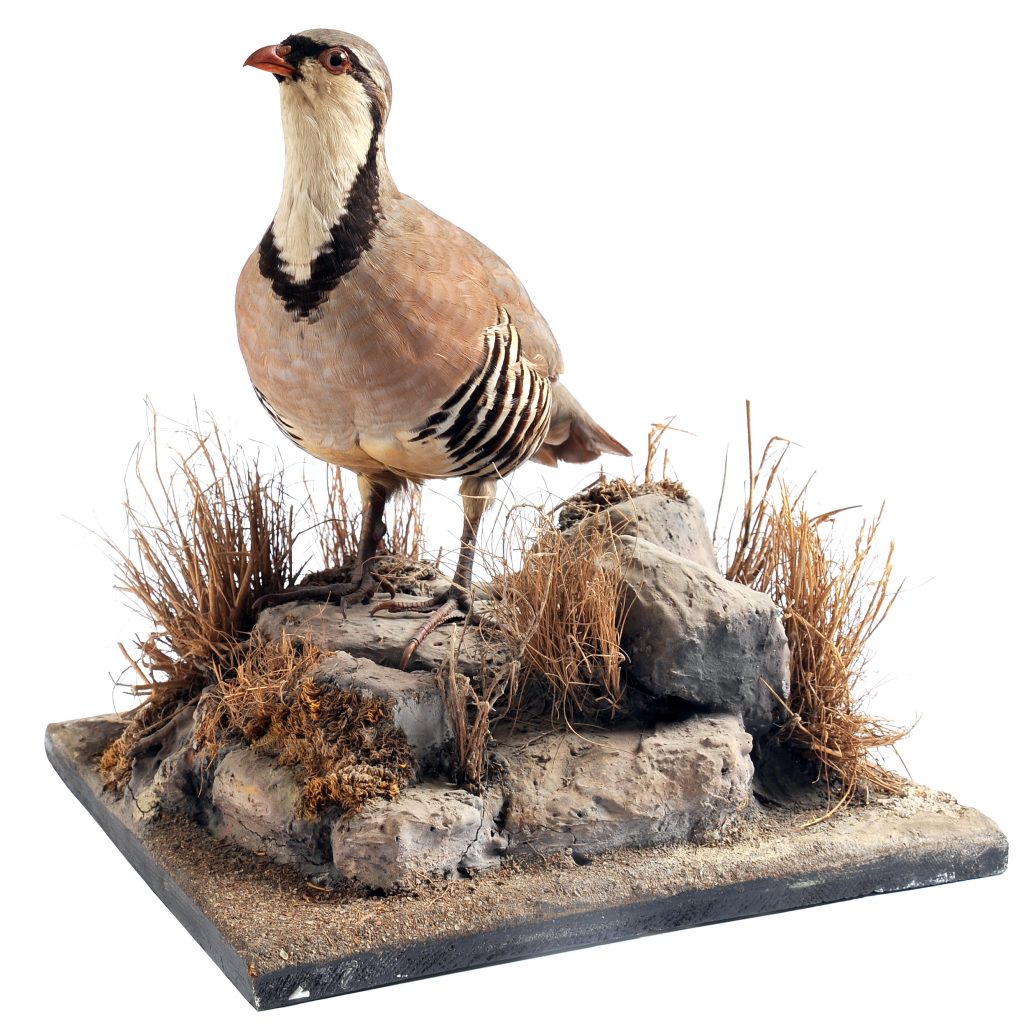
Alectoris graeca (Meisner, 1804) - rock partridge Ornithofauna
Collection “Dionisie Linția” - Department of Natural Sciences - Banat National Museum
The collection was donated by Dionisie Linţia in 1937 and then contained 1300 pieces. It currently contains 2622 copies. The collection is structured as follows: 1769 balguri, of which 1580 come from Romania and 189 from abroad; 853 naturalized pieces, of which 825 come from Romania and 28 from abroad. 349 species and subspecies of birds, according to Charles Vourie's classification, classified into 20 orders, 51 families and 26 subfamilies. From a zoogeographical point of view, the Central European species are best represented, then the Eastern European species and finally those from the Southern European areas.
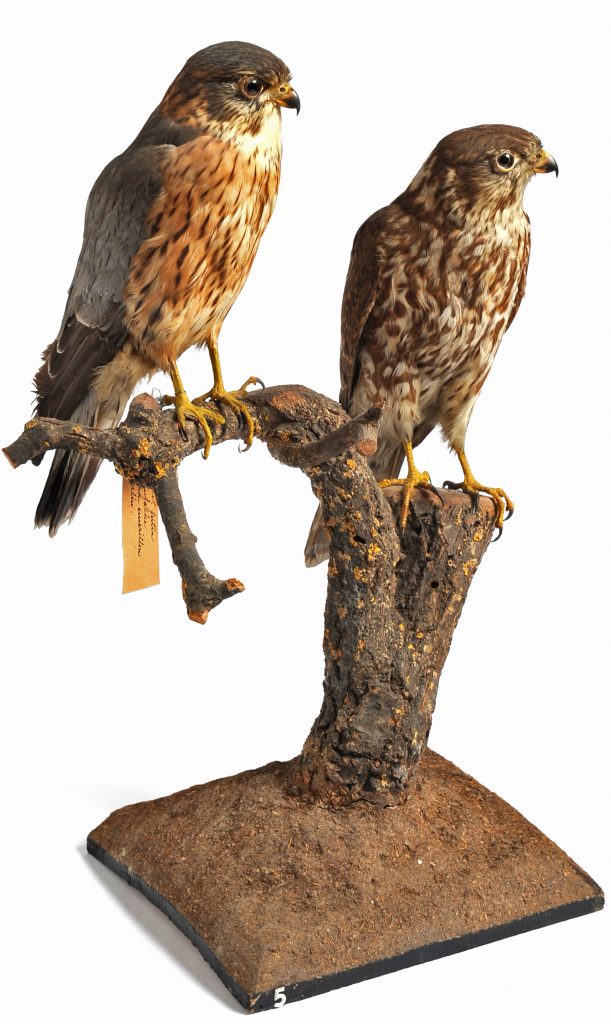
Falco columbarius aesalon Tunstall, 1771 - winter falcon Ornithofauna
collection “Dionisie Linția” - Department of Natural Sciences - Banat National Museum
The birds are preserved in the form of skin and are intended for scientific research (manure). But the collection also contains three-dimensional naturalized (mounted) birds, which can be part of exhibitions and can contribute to ecological education being presented in biogroups and dioramas.
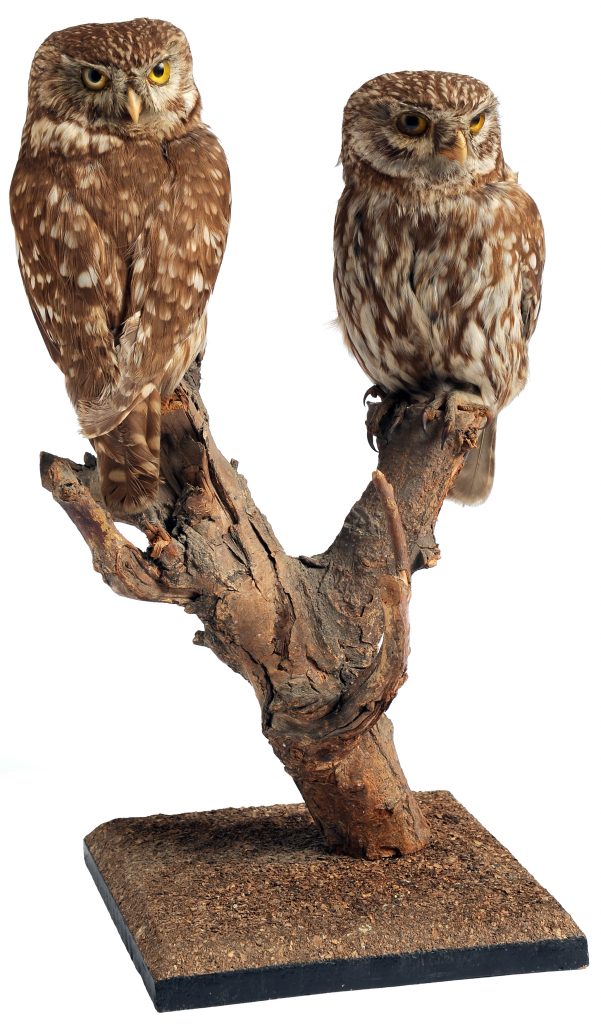
Athene noctua (Scopoli, 1769) - owl Ornithofauna
Collection “Dionisie Linția” - Department of Natural Sciences - National Museum of Banat
The popularization of this collection was done through numerous scientific works: Dionysius Line, Systematic Catalog of the Romanian Ornithological Fauna; Nadra Emil, Systematic Catalog of the Ornithological Collection of the Banat Museum Timisoara, Kiss Andrei, Dionisie Linţia, (Ornithological correspondence), Kiss Andrei, Dionisie Linţia, Ornithological observations, Kiss Andrei, Dionisie Linţia, Ornithological Collection, M-Kiss Andrei, Ornithology Collection "Dionisie Linţia", M-Kiss Andrei, Dionisie Linţia, 130 years since birth, but also through color illustrations, entrance tickets, photos, posters, articles and interviews in the media and ecological education.
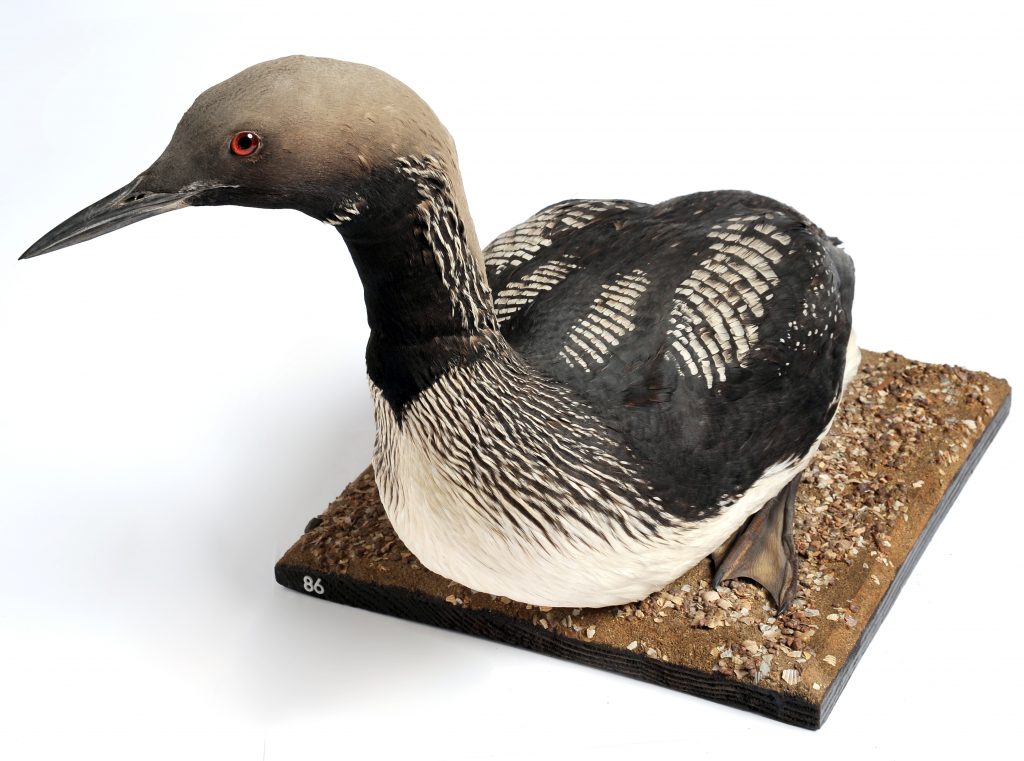
Gavia arctica (Linnaeus, 1758) - polar
diver Ornithofauna collection “Dionisie Linția” - Department of Natural Sciences - Banat National Museum
OOLOGICAL COLLECTION
The oological collection (bird eggs) is based on part of the famous collection of the engineer Gustav Ertl, the director of forests. It includes 447 bird nests with 1957 eggs, representing 223 species of birds, which Dionisie Linţia brought to Timişoara, in 1910. In 1937, Dionisie Linţia donated another collection of 490 eggs, in 60 of nests from about 95 species of birds. After the Second World War, the situation of the collection is as follows: 198 represented species, eggs 537, number of eggs 2184, of which eggs with scientific data 357, and without data 179.
OSTEOLOGICAL COLLECTION
The osteological collection (bird and mammal bones) includes bird bones, obtained from the feeding of birds (skulls and sternums), as well as mammalian skulls. It contains 132 specimens in good condition.

The lepidopteran collection “Dr. Frederic König ”
The lepidopteran collection “Dr. Frederic König ”is the richest regional collection of day butterflies in this part of Romania. It contains 23,000 specimens belonging to 1750 species. It contains over 200 species and subspecies with significant faunal value, rarities, unique, endemics, princeps specimens, allotypes, holotypes and variations, declining species, scientific curiosities.
The foundations of the collection were laid in 1954 when 2031 copies were purchased from the Timişoara teacher Ernest Kraushaar. Until then, there were a small number of native and exotic butterflies in the collection of Professor Káldor Nándor and New Guinea explorer Fenichel Sámuel. In 1961 and 1964, the acquisitions of the lepidopterologist Dr. Aurelian Popescu-Gorj and the doctor Dr. Nicolae Săvulescu were added. In 1967, the museum purchased 460 copies of exotic butterflies from Dr. Andrei Bostan.
Currently, 90% of the lepidopteran collection is the result of the scientific activity of the Banat researcher Dr. Frederic König. Lepidoptera Collection „Dr. Frederic König ”entered the museum's patrimony in 1970 when 13,060 copies were purchased. It was enriched by collections and acquisitions from 1970-1994.
The collection includes pieces of scientific and documentary value, namely the holotype and allotype of the species Erebia melas runcensis König, a subspecies collected in the Apuseni Mountains and described by Dr. Frederic König, the metatype of the species Erebia melas carpathicola Popescu-Gorj et Alexinschi- Haghimaş, as well as the paratype of the species Erebia melas konigiella Popescu-Gorj, collected on Mount Piule from the Retezat massif. We point out the existence in the collection of some species of faunal interest endangered by the disappearance of their biotope: Chamaesphecia palustris, Ostrinia palustralis, Cortina borelli ssp. Lunata, Rhyparioides matelkana.

The collection of butterflies “Dr. Frederic König ”- Department of Natural Sciences - Banat National Museum
The collection includes other species of documentary-faunal value, among which we mention: the endemic Evergestis strogovichi, the boreoalpine relict Anaites simpliciata, the first European specimens of the species Xylena lunifera, the boreoalpine relic Apamea maillardi, the Pontomediterranean element Gortyna moesiaic , extinct species of Romanian fauna, Pieris nanni rossi, local species, found on limestones in southern Banat, endemic Erebia neleus etc. The collection of lepidoptera is also composed of a series of hybrids, made for the first time in our country, by Dr. Frederic König, hybrids between the species Eudia pavonia and Eudia spini and between Eudia pavonia and Batumia pyri.Following the acquisitions from 1980-1994, a series of rarities collected in Dobrogea and the Danube Delta were added to the collection, such as: Luperina zollikoferi, Drasteria caucasica, Votodonta vittata, Scotia puta, Scotia obesa nivea, etc.
The popularization of this collection has been done under different aspects, over time, through scientific works, maps, leaflets, illustrations (König Frederic, Catalog of the Lepidoptera Collection of the Banat Museum, published by CCES Timişoara, 1975, Supplement, 1998, with species, respectively 1440 specimens, from 1980 -1994; M-Kiss Andrei, Balaci Ana, Collection of lepidoptera "Dr. Frederik König", leaflet published by the Museum of Banat Timişoara, Department of Natural Sciences, Timişoara, 2006).
Conservation status: butterflies are preserved in insects, suitable drawers, hermetically sealed, dry preparations, by using chemicals (insecticides and insect repellents) being intended exclusively for scientific research. Therefore, muses, which would endanger the integrity of this natural heritage, are not used in exhibitions and other manifestations.
The representative collection of the Banat region consists of 4528 samples. It includes rocks and minerals specific to the iron area from the ancient Banat centers, Ocna de Fier, Dognecea, as well as from the Baia Mare area. The paleontological material includes samples from Banat deposits, the best being the Mesozoic era (end of the Cretaceous period) and the Neozoic era.

Collection of minerals and paleontology - Department of Natural Sciences - National Museum of Banat
The collection of dried plants (Herbarium) includes 11,256 herbaceous leaves, with many rare and endemic species from Banat. It consists of several collections: Herbarium Popescu-Domogled, Herbarium Vlaicu and last but not least Herbarium of doctor Árpád Degen. (Milanovici Sretco, M-Kiss Andrei, Herbarium Dr. Árpád Degen (1866-1934) Scientific importance, published by the Museum of Banat Timişoara, Department of Natural Sciences, Timişoara, 2012).
Wild orchids from Banat
Our orchids are perennial herbaceous plants, which have a rhizome or more often 2 tubers, more or less globular or digitally branched, one of the tubers being the main one, from which comes the plant (flowering stem).
The flora of temperate orchids, where only terrestrial species grow, is much poorer than in the tropics. About 900 species of 75 genera grow in the temperate zone of the northern hemisphere. In America, north of Mexico, 170 species grow, and in Europe a little more, 200 species of 36 genera.
In the western part of the country (Banat), approximately 54 species of this large family can be found (according to the Flora of Romania, 58 species grow in our country).
Regarding the issue of protection and conservation of terrestrial orchid species in the continental area, and in this case also the species that grow in Romania, leaving aside the snobbery of fashion and the world popularity of orchids, we mention the fact that a large part of the the country's population is unaware of the existence of orchid species in Romania).
A large part of the species presented in the image can also be found in the Herbarium of the Banat Museum.
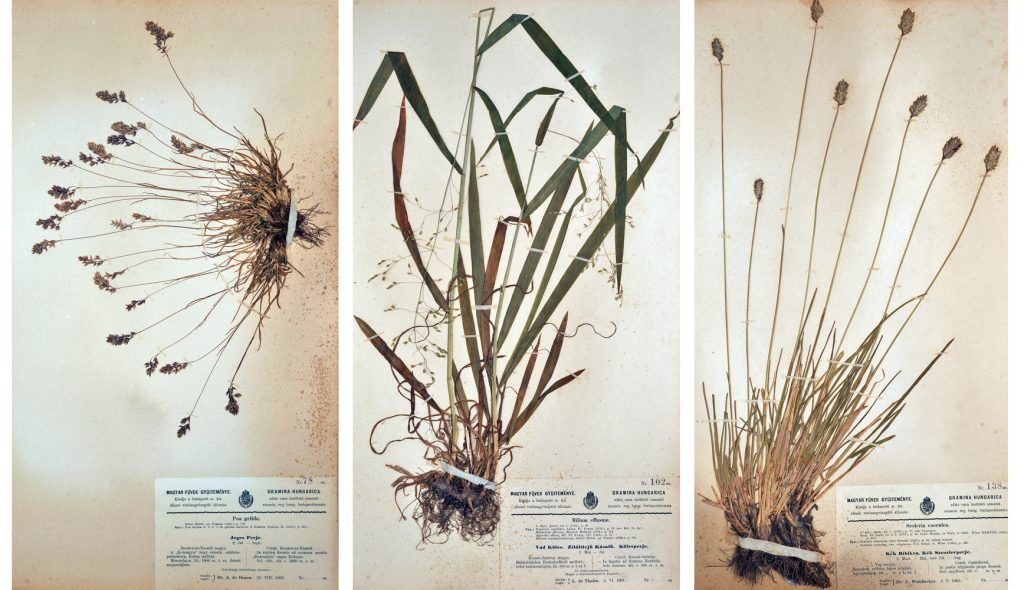
Tabs from the herbarium “Dr. Árpád Degen ”- Department of Natural Sciences - National Museum of Banat
Rare plants from Banat
Wandering through the natural reserves (and not only) of Banat, from the plains to the rugged peaks of the Banta Mountains, we can find many species of rare plants and flowers, some of them protected by law. Unfortunately, many of the flowers that once adorned the plains and mountains of Banat have been mercilessly torn and disappeared, and others are becoming rarer.
The natural floristic heritage of Banat has entered a very alarming state of extinction in recent decades caused by two groups of factors: human activities leading to the destruction of plant habitats (especially rare ones) and the expansion of invasive plant species, both in terrestrial ecosystems (meadows, forests, steppes) as well as in aquatic ones.
A large part of the species presented in the image can also be found in the Herbarium of the Banat Museum.
Endemic plants from Banat
By endemism we mean the phenomenon of belonging of separate species, genera, families and other taxa to a determined geographical territory, relatively limited, sometimes to an extremely limited area.
Endemites, designate species, genera, families and other taxa delimited in their spread to a given territory (province, region, district, etc.). Endemite (from the Greek endemos - indigenous) is therefore a taxon with a restricted area to a certain natural region. The Campanula carpatica (Carpathian bell), for example, is a Carpathian endemic, while Tulipa hungarica (Banat tulip), an endemic found only in the Large and Small Boilers of the Danube Gorge; but Epipactis purpurata (orchids), widespread only in Europe and not on other continents, is endemic. An endemic can therefore be specific to a country, continent or any area.
The Department of Natural Sciences is the direct descendant of the Society of Natural Sciences of Timișoara (1873-1918), which focused around it important personalities of Timișoara at that time, such as Dr. V. Szmolay, E. Merkl, Dr. L. Kuhn , Dr. L. Tökés, G. Czirbusz, Zs. Ormós and others, as well as world personalities of the time, such as E. Holub and others. More than 125 years ago, the Society of Natural Sciences set out to cultivate and spread all fields of natural sciences in general and to research the natural conditions of Banat in particular. For this purpose he held popularization conferences, organized excursions and expeditions for collection and study in Banat, set up the Museum of Natural Sciences, a specialized library, edited the Society's bulletin, Notebooks of Natural Sciences, and I got in touch with others. similar companies, by correspondence, exchange of publications and visits. Due to the effervescence of the cultural-scientific activity carried out by the Society of Natural Sciences from Timișoara, Banat was discovered from a naturalistic point of view. the telegraph, etc., have publicly used telephony since 1882 (national premiere), and since November 12, 1884 they have illuminated the streets of the city with electricity (European premiere), had a laboratory for the analysis of food and milk, a meteorological and seismological resort, and many others, which made Timișoara a modern European city at the end of the last century.
In the interwar period (1919-1945) the old collections, which diminished due to inadequate spaces and specific pests, were gradually replaced by the new collections. The first exhibitions are being built, and the new ways of exhibiting, in biogroups and dioramas, open a modern period of Romanian museology, whose spiritual mentors and main organizers were G. Antipa in Bucharest and D. Linția in Timișoara. Dionisie Linția (1880-1952), hunter, dermoplastician and learned ornithologist, led and built the Museum of Natural Sciences until the end of his life, laid the foundations of the largest collection of native birds in Romania, compiled the first catalog of this collection , established the Jurilovca-Timișoara Ornithological Resort (the first ornithological resort in the country), participated in the organization of the First Congress of Naturalists in Romania. His name is also linked to the establishment of the Sinaia Zoo, the Hubertus Hunting Society, the Timișoara Sleeping Fishing Society, etc. His work, The Birds of Romania, in 3 volumes, is the leading book of ornithologists and includes all the data known in this specialty up to him.
In 1954, the Museum of Natural Sciences moved to Huniade Castle, second floor, as an integral part of the Banat Museum, later the Banat Museum of Timisoara, where it still exists today, with a specific dynamic of exhibitions. On the anniversary of the Museum, in 1973, the inventory of the Department of Natural Sciences consisted of over 35,000 museum pieces, had temporary and traveling exhibitions. Among those who completed this unique cultural work we mention E. Nadra, Dr. F. König, Dr. Dumitru Spătaru, Elena Stratul, C. Riskcuția, as specialists, C. Borsicki, A. Rădulescu, I. Szaappanos, D Hard as artists. In the period 1984-1985, the Natural Sciences Department was 80% demolished, under the political impetus of the time, and well-arranged warehouses were moved to inappropriate places.
Today, the Natural Sciences Department offers visitors the permanent exhibitions “Flora and fauna of Banat” (the last documentary section of micro and macrodioramas of the Romanian museum technique), “Evolution of man” (reconstruction revised in 1997 after the initial model from 1972), , in the form of microdioramas, unique national) and “Mineralogy” (completion and selective replacement in 1998 of the material from the exhibition made in 1972). The restoration of the visiting circuit on the second floor is a major desideratum in the concerns of the Section's staff. The Department of Natural Sciences has over 50,000 museum pieces, distributed based on scientific criteria in collections, of which the most significant are: Rock and Mineral Collection, Paleontology Collection, Pressed Plant Collection (Herbarium),
-
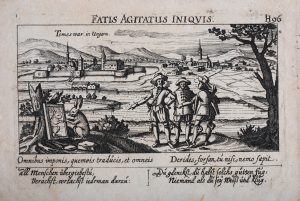
Paulus Furst (17th century), Timişoara, wood engraving; the work appeared in the Cosmic Sociography by Daniel Meissner, Nuremberg, 1638
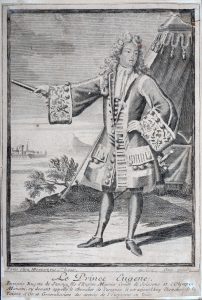
Jean Baptiste Bonnard (1686-1755), Youth Portrait of Eugene of Savoy, needle engraving
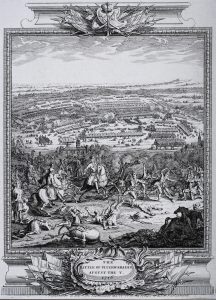
C. Benoist (18th century), Battle of Petrovaradin 1716, chisel and needle engraving
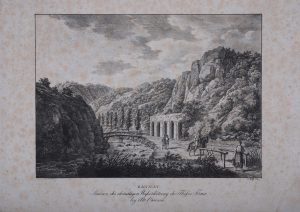
F. Wolf, Danube - The ruins of Orşova Veche, sheet from L. Erminy's notebook, Danube Course…, lithograph, sec. XIX
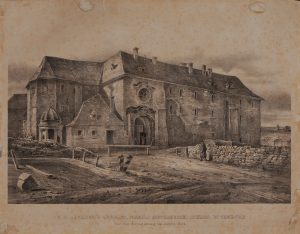
Anonymous, Huniade Castle, Timişoara, sec. XIX (before 1848), lithograph
The History collection is one of the most important collections of the Banat Museum, its beginnings being closely related to the establishment of the History and Archeology Society from Timişoara, in the 70's of the century. in the 19th century. The most valuable pieces of the collection were recorded in the period 1872-1918, but the acquisitions and especially the donations continued in the interwar years, because at the end of the '50s of the century. XX the entire patrimony of the institution to be reinvented, the historical pieces being merged with the archeological pieces.
During 2006, following the administrative reorganization of the Banat Museum, the common heritage of the former History Section was divided into two large collections, History and Archeology, the first comprising at the time of separation a documentary and museum fund of over 25,000 objects. During the same year, the History collection was enriched with numerous clichés on glass, the objects being transferred from the Ethnography Section of the Banat Museum, thus constituting a new sub-collection within the inventory.
Currently, the History collection within the Timişoara Museum counts almost 30,000 patrimony objects, which reflect the political-administrative and socio-economic evolution of the city of Timişoara and Banat during the last centuries. The pieces included in the History collection are broken down into multiple sub-collections: Armament; Historical documents; Old book; Flags and flags; Sealing matrix; Photographs and illustrations; Prints and lithographs; The painting; Clichés on glass; Decorative Art; Maps and plans; Posters etc. Of these, the most valuable can be considered the sub-collections of Armament, Flags and Flags, Old Book and Historical Documents.
Two sub-collections are worth mentioning: the cartographic one, with over 1,400 maps and plans of the city of Timişoara and of the Banat localities, and the sub-collection of posters, perhaps the largest collection of this kind in the country.
The sub-collection of decorative art, although smaller in number, includes objects from the 15th century. XVIIl-XIX, especially from Banat. Due to their stylistic diversity, the pieces reflect the tastes and the local cultural horizon, having a great documentary value.
The sub-collection of engravings represents an important iconographic testimony of Timişoara sec. XVI-XIX. Here we find: the engravings representing the battles of Zenta (from 1673) and Petrovaradin (from 1716), with reference to the anti-Ottoman wars, which marked the end of the century. 17th century - beginning of the century the eighteenth; the album dedicated to the course of the Danube with drawings by Ludwig Erminy, made by lithographs Ernest Kunike and F. Wolf, published in Vienna in 1826, but also the landscapes - called "Road on the Danube" - made after the drawings of Jacob Alt and Ludwig Erminy.
Among the most important heritage pieces of the History collection we mention: the old register of the inhabitants of Timişoara “Catastrum Civium” (the first volume of the work, which includes the period 1717-1832); Imperial Diploma for the elevation of Timisoara to the rank of Caesar-Christian City (awarded in 1781 by the Austrian Emperor Joseph II); diplomas confirming the statutes of the Timişoara guilds (from the first half of the 19th century); medieval swords from the sec. X-XIV; the sword of the Austrian general Johann von Hiller, Austrian commander who fought against Napoleon I; the wig and fez of General Bem József, commander of the Hungarian revolutionary armies during the 1848-1849 Revolution in Transylvania; The iron tree of Timişoara, symbol of the city since 1828; the emblem of the Timişoara inn "La Trompetistul"; letters of the poet George Coşbuc; the flag from Darniţa of the first battalion of Transylvanian, Banat and Bucovina volunteers, who enlisted in the Romanian army in the summer of 1917; paintings by the well-known Banat artist Stefan Jäger; the wooden crate in which the documents of the Paris Peace Conference on Romania were brought into the country; the documentary funds Ioachim Miloia and Nicolae Ilieşiu; the original document of the Timişoara Proclamation of March 12, 1990, etc. the documentary funds Ioachim Miloia and Nicolae Ilieşiu; the original document of the Timişoara Proclamation of March 12, 1990, etc. the documentary funds Ioachim Miloia and Nicolae Ilieşiu; the original document of the Timişoara Proclamation of March 12, 1990, etc.
In recent years, the History collection has been enriched with valuable objects, especially from the historical archive of the museum, but also from acquisitions or donations. We mention a document by Bogdan Voievod regarding Bucovina, antique furniture, a tree trunk brought to Timişoara as a testimony of war in the years 1916-1917 on the Italian front, etc.
-
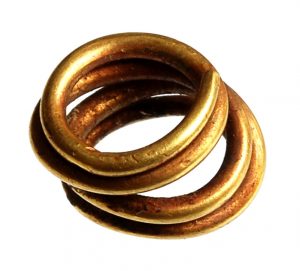
Loop ring (Bronze Age, 18th-16th century BC) discovered at Beba Veche, Timiş County

Earrings (Bronze Age, 18th-16th century BC) discovered at Beba Veche, Timiş County
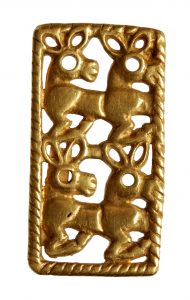
Gold ornamental plate (6th-4th century BC)
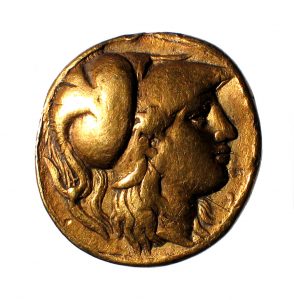
Stater issued by Alexandru Macedon (336-323 BC), discovered at Remetea Mare, Timiş County
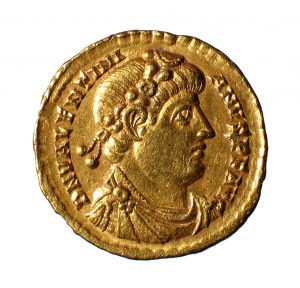
Solidus emitted by Valentinian I (367-375 AD)
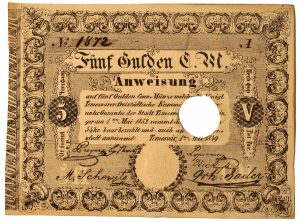
Paper worth 5 guilders (forints) issued in Timisoara on May 1, 1849
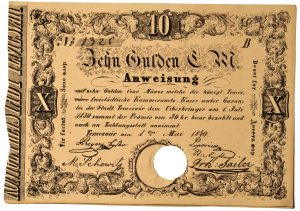
Paper worth 10 guilders (forints) issued in Timisoara on May 1, 1849
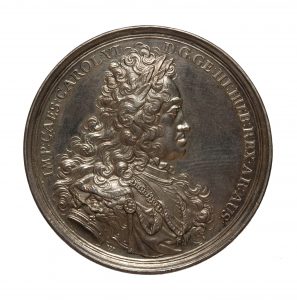
Medal of liberation of the city of Timisoara by the Austrians from Turkish occupation on October 12, 1716 (Siegthaler)
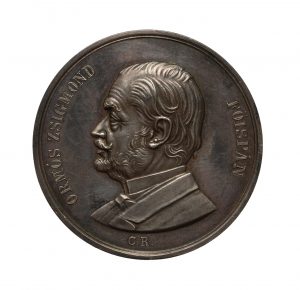
Ormós Zsigmond's 70th Anniversary Medal (February 20, 1883)
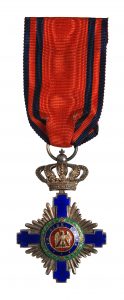
Order "Star of Romania", model 1877, for civilians, knight rank
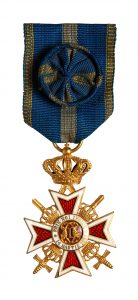
Order "Crown of Romania", model 1939, war, officer rank
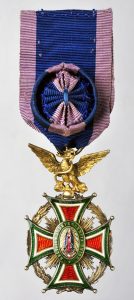
Mexican Imperial Order "Maria de Guadalupe", rank of knight, model 1865; belonged to Augustin Weber (1833-1909), chaplain of Emperor Maximilian I of Mexico
From its beginnings (1872), the Banat Museum in Timişoara also had a numismatic collection, which increased from year to year through donations, acquisitions and accidental archaeological discoveries. This collection was first exhibited in 1877.
The existing numismatic fund in the museum was enriched by the purchase in 1895 of the valuable numismatic collection of Ormós Zsigmond (founder of the Timişoara Museum), which totaled 9,424 gold, silver and bronze coins and medals. The Banat Museum thus became the first of the regional museums of the time in terms of the value of the numismatic collection. By 1916 this collection had reached 30,266 pieces, but suffered heavy losses at the end of World War I and World War II.
Over time, the numismatic collection of the Banat Museum also included other important numismatic collections: Pongrácz I. (1903-1904); F. Ferch (1937); G. Gergely (1958); E. Pâslaru (1981, 1987); L. Megyesi (1987).
Currently, the numismatic collection of the Banat Museum in Timişoara has 39,614 pieces, consisting of three collections: Gold pieces; Coins and Medals. Although heterogeneous in structure, it is one of the important museum collections in Banat and Romania.
The Gold Pieces collection includes 222 gold coins and ornaments, the oldest of which are bronze ring buckles (18th-16th centuries BC), and the newest are decorative art objects (18th-16th century BC). XIX-XX). Among the gold coins are: a Persian gift issued by Artaxerxes II; the stature of Alexander the Great (4th century BC); Roman aura (1st century BC - 3rd century AD) and late Roman solids (4th-5th century AD), but also the Transylvanian duchies (16th-17th centuries).
The Coins collection consists of 37,049 coins and banknotes, which have entered the museum's patrimony over time through donations, acquisitions or archaeological research. The coins included in the collection are diverse both in terms of the issuance period and the issuing authorities. These date back to the 15th century. IV a.Chr. to this day, the most recent issues being the anniversary coins issued by the National Bank of Romania.
The collection includes a series of ancient (especially Roman: Secusigiu, Timişoara, Dalboşeţ, Răcăşdia II, Moldova Nouă) and medieval treasures from Banat (Gelu, Beregsău Mic, Făget-Begheiul Mic, Timişoara), as well as numerous monetary discoveries. isolated, resulting from archeological research carried out by the Banat Museum in Timişoara (at Mehadia, Berzovia, Tibiscum - Jupa, Orşova, Cenad, Timişoara, etc.) or following accidental discoveries.
Special mention should be made of the presence in the collection of papers worth 5 and 10 guilders issued in Timişoara on May 1, 1849; of the Timişoara assignments of 10, 20 and 50 files issued on December 1, 1919, but also of other rare Banat necessity programs.
The Medals collection totals 2,343 medals, plaques, molds, decorations, badges and chips. Notable: Roman medallions (2nd-3rd centuries AD); medal of the Cardinal of Venice, Petrus Barbus (1455); medals dedicated to General GB Castaldo (1551-1556); very rare medal of Cardinal Richelieu (1631), engraver Jean Warin; the medals of the liberation of the city of Timişoara by the Austrians from the Turkish occupation (October 12, 1716); the decorations of Augustin Weber (1833-1909), chaplain of Emperor Maximilian I of Mexico (including the Mexican Imperial Order "Maria de Guadalupe", knight rank); the Constantin Vasilescu medal collection (former accountant of the Royal House), entered the patrimony of the Banat Museum in the interwar period, as well as numerous pieces with a special artistic value. Within the collection,
-
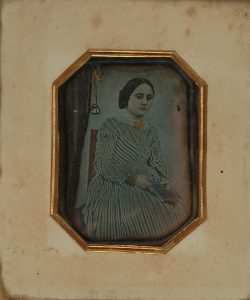
Dagherotype (1847)
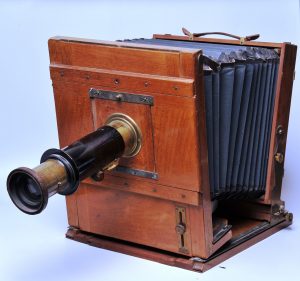
Camera, made in France (1867)
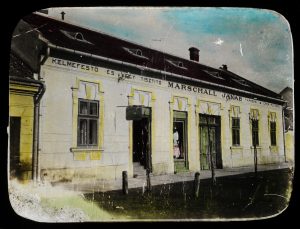
Photo after negative on glass with color intervention (Aniline)
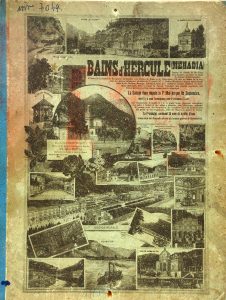
Printed album with photos dedicated to Băile Herculane resort (late 19th century)

Photo after negative on glass, Facade of the Franz Jozsef Theater in Timişoara at the end of the century. XIX
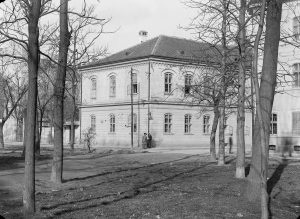
Photo after negative on glass, Timişoara at the end of the century. XIX
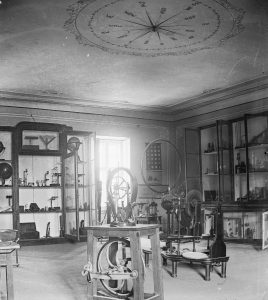
Photo after negative on glass, Physics Laboratory of Piarist High School from Timişoara, Photographer Jozsef Brand
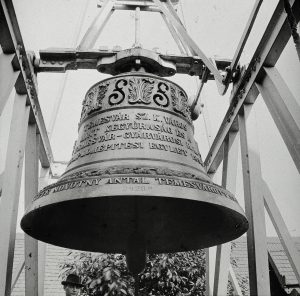
Photo after negative on glass, Bell poured in the workshop of the famous Novotny A. from Timişoara
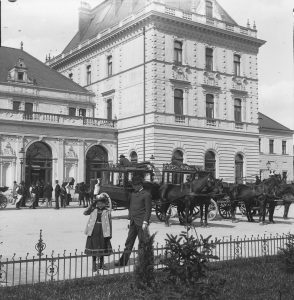
Josefstadt train station. Timisoara at the end of the century. XIX
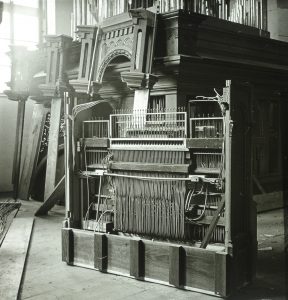
Photo after negative on glass, Organ workshop in Timişoara
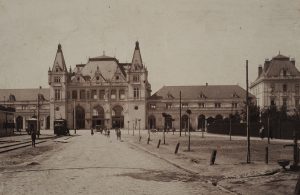
The façade of Iosefin Station (Miss Elena), after 1910
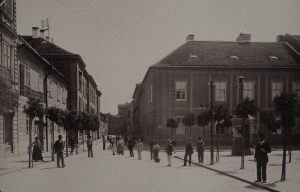
The current Lucian Blaga street in Timişoara (after 1900)
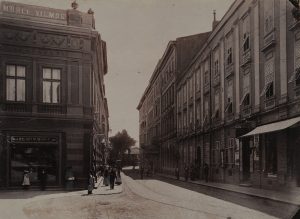
Wilhelm Mühle Florist's presentation shop, located on the current Alba Iulia Street (after 1895)
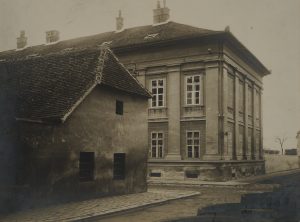
Appearance in Timişoara (after 1900)
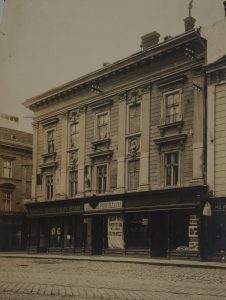
Building in St. George's Square in Timisoara (after 1900)
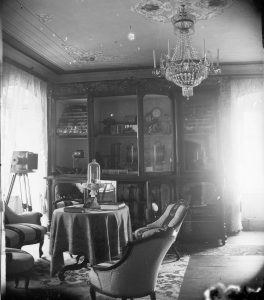
Interior of the house of the parish priest Jozsef Brand (ca. 1890)
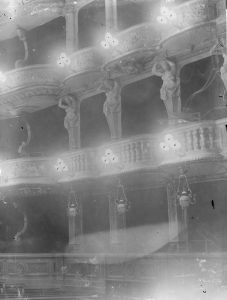
The interior of the Franz Jozsef Theater in Timişoara (after 1890)
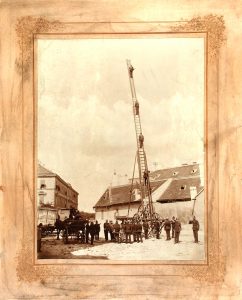
Simulation of Volunteer Firefighters from Timişoara, after 1890, Klapok Alajos workshop
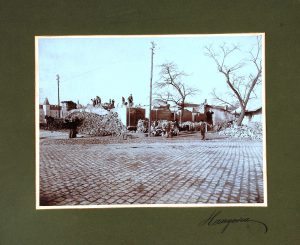
Hypostases of the deforestation of Timisoara, Hungary workshop
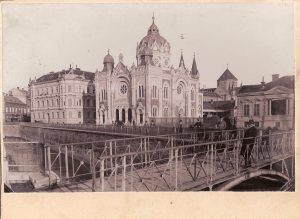
Fabric Synagogue, Timisoara
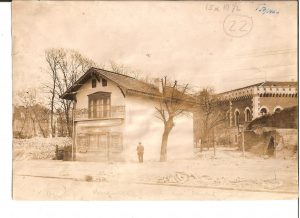
Photographer Fridolin Hess's workshop near Huniade Castle

Aurel Vlaicu's Flight, Krager Workshop in Lugoj (after 1911)
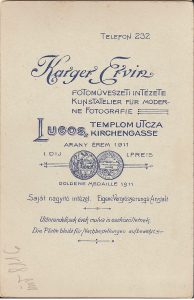
Reverse photo of Erwin Krager
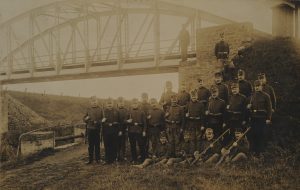
Austro-Hungarian soldiers during the First World War photographed near the Modos bridge, positive image.
On January 7, 1839, Daguerre's invention, which bears his name, was presented to the public at the Paris Academy of Sciences, marking the birth of photography worldwide. A few months later, the local German-language press in Timişoara already reported the presence of such daguerreotypers on the territory of the city, thus marking the beginning of a long and intense photographic activity in Banat.
The collection of photographs and glass clichés of the Banat Museum in Timişoara is one of the most complex collections kept by museum institutions in the country, with a coverage that spans three centuries and includes several types and procedures, starting with the one mentioned. The earliest preserved photographic images date back to 1840, among them a beautiful daguerreotype with color intervention (dated 1847), representing a portrait and also one of the oldest known photographic images in our country.
Starting with the second half of the century. In the 19th century, images produced in negatives on glass plates and positively printed on albuminous paper, discovered after 1850, were used. The Banat Museum has a rich collection of such photographs, representing various scenes and historical events, urban aspects or landscapes both the Banat area and the other Romanian territories, as well as a number of aspects from the former territories of the Austro-Hungarian Monarchy.
Among the authors of these photographs are some names of European and national importance for the history of photography in the twentieth century. 19th century: Klosz György, Lazar Letzter, Kossák József, Brand József, Fridolin Hess, Naschitz László and others.
for researching the urban and architectural development of the city, images dating from the last quarter of the century. nineteenth century and extending to the years of communism. Many of these photos are unique sources of documentation for several monuments in Timisoara.
A unique series is that of glass clichés, numbering over 2,000 frames, which capture early aspects unique in Timisoara, such as the interiors of the first museum established in Banat (1872) and among the first in the country (made in the last quarter of the century). XIX), the interiors of the Roman Catholic Episcopate, various monuments and buildings disappeared or some moved, which are true documents for researchers of this aspect. The shots were taken by Brand József and József Kossák, the latter also holding the title of Imperial and Royal Photographer, awarded by Emperor Franz Josef himself. A number of these clichés also date from the interwar period, being important from an ethnographic point of view.
Among the photographic documents are family albums or photographs of Banat and national personalities or whose names are associated: Ormós Zsigmond, Aurel Vlaicu, Traian Vuia, Coriolan Brediceanu, Virgil Birou, Avram Iancu, Ioachim Miloia, August von Mackensen, Dionisie Linţia, Nicolae Iorga et al.
A series of documentary photographic images depict aspects of the two World Wars through unique frames, which complete the universal image of these events from an iconographic point of view.
The collection continues to the present day, covering the communist, post-revolutionary period, to the digital images of today and is a unitary collection that completes the historical-artistic information about the development of photography and to reconstruct as accurate information about our history. .
